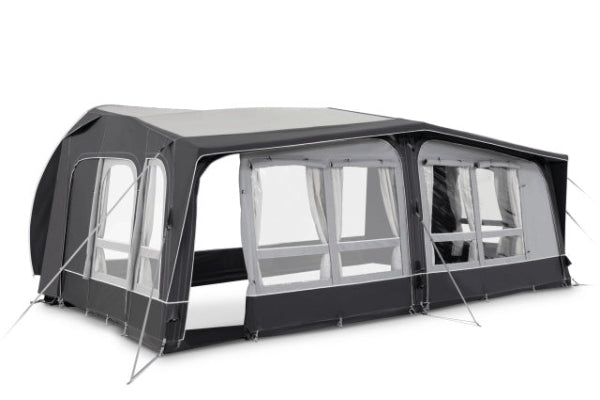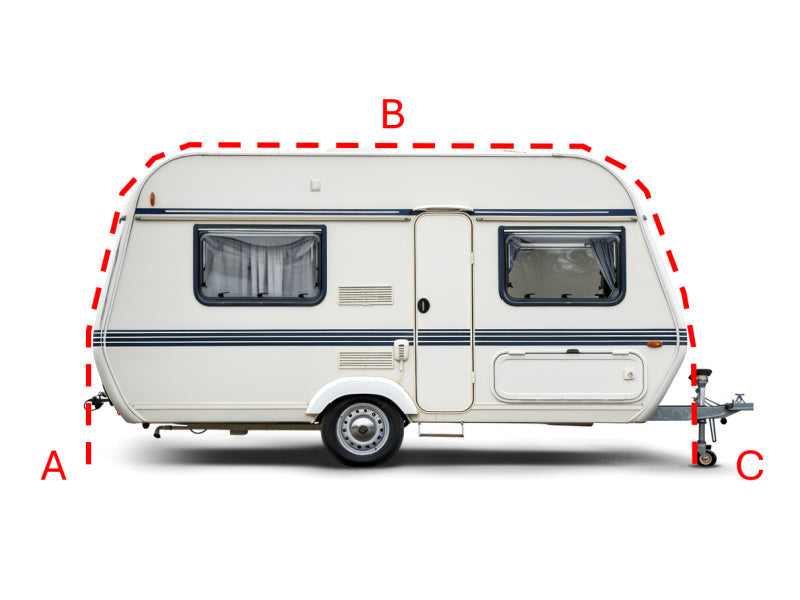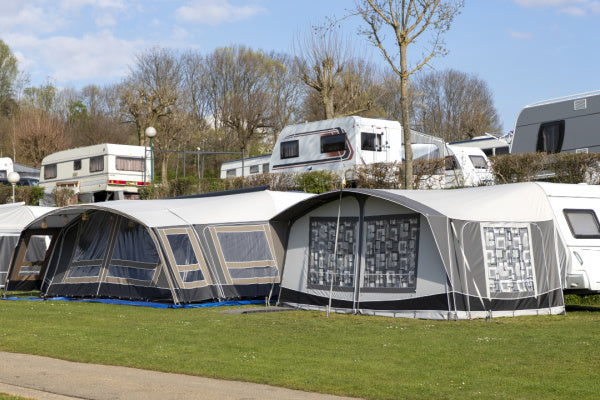What is the Best Material for a Caravan Awning?
Picture this: It's raining cats and dogs at the campsite. Some caravanners are cosy under their awnings, while others are frantically mopping up leaks. The difference often comes down to one crucial choice - the awning material.
For most caravanners, polyester proves to be the champion choice. It strikes an excellent balance between durability, affordability, and ease of maintenance. But wait! Before you rush to buy, there's more to consider. Your perfect caravan awning might need different qualities altogether.

Key Factors to Consider When Choosing Awning Material
Durability and Weather Resistance
British weather throws everything at caravan awnings. From scorching summer days to unexpected downpours, the right material needs to handle it all.
Resistance to UV Rays, Wind, and Rain
Sun damage ranks among the top culprits for awning deterioration. Quality materials must shield against harmful UV rays while maintaining their structural integrity. Strong winds test the fabric's strength, while rain challenges its waterproof capabilities.
Modern awning materials incorporate advanced weather-resistant technologies. These innovations help prevent water penetration while allowing the material to flex and move with gusting winds.
Mould and Mildew Resistance
Nobody wants green spots spreading across their awning. Mould and mildew thrive in damp conditions, making moisture resistance crucial.
The best materials include antimicrobial treatments that actively fight against fungal growth. This protection proves especially valuable during extended periods of wet weather or in humid coastal locations.
Ease of Maintenance
Let's face it - camping should be about relaxation, not endless maintenance tasks.
Cleaning and Drying
Different materials demand varying levels of cleaning effort. Some merely need a quick wipe-down with soap and water. Others require specialised cleaning products and more thorough attention.
Quick-drying capabilities matter significantly. Materials that dry rapidly reduce the risk of mould growth and make pack-up times shorter after rain.
Repairing Tears and Punctures
Accidents happen. Tree branches snag, winds catch edges, and sometimes pets get overexcited. The ability to repair damage quickly can save both money and hassle.
Some materials accept patches easily, while others might need professional intervention. Having repair options can extend an awning's life considerably.

Aesthetics and Appearance
Colour Options and Fade Resistance
Sun-bleached awnings can make even the newest caravan look tired. Superior materials retain their colour despite constant sun exposure.
Modern awnings come in an extensive range of colours and patterns. These options allow matching with caravans while maintaining practical benefits like heat reflection or dirt disguise.
Overall Look and Feel
The texture and finish of awning materials significantly impact the overall appearance. Some offer a premium, glossy finish, while others provide a more traditional, matt look.
Popular Caravan Awning Materials
Acrylic
Think of acrylic as the premium option in the awning world. It costs more, but delivers exceptional performance.
Benefits of Acrylic
- Remarkable resistance to UV damage
- Holds colour beautifully over time
- Superior water resistance
- Professional, high-end appearance
- Exceptional longevity
Drawbacks of Acrylic
- Higher price point
- Can develop condensation issues
- Requires specific cleaning products
Polyester
Polyester stands as the versatile all-rounder of awning materials. It delivers solid performance without breaking the bank.
Benefits of Polyester
- Easy to handle during setup
- Budget-friendly pricing
- Extensive style selection
- Dries quickly after rain
- Good water resistance
Drawbacks of Polyester
- Less durable than acrylic options
- Colours may fade faster
- Can stretch in certain conditions

Canvas
Canvas represents the traditional choice, offering unique benefits despite modern alternatives.
Benefits of Canvas
- Natural breathability
- Classic appearance
- Excellent temperature regulation
- Environmentally conscious choice
Drawbacks of Canvas
- Weighs more than synthetic options
- Demands regular maintenance
- Mould risk when stored damp
- Prone to weather-related size changes
Choosing the Right Material for Your Needs
Consider Your Camping Style
The perfect awning material matches camping habits and preferences. Weekend warriors need different features than long-term campers.
Frequent Travelers vs. Seasonal Campers
Regular travellers benefit from lightweight, quick-drying materials that make setup and takedown easier. Seasonal campers might prioritise durability and weather resistance over portability.
Budget Considerations
Quality awnings represent a significant investment. Consider both initial costs and long-term value when making choices.
Better materials often justify their higher price tags through extended lifespan and reduced maintenance needs. However, budget-friendly options can still provide excellent service with proper care.
Awning Type and Size
Full Awnings vs. Porch Awnings
Full awnings demand more from their materials due to larger surface areas and increased wind exposure. Porch awnings might prioritise different qualities due to their smaller size and specific use cases.
Impact of Size on Material Choice
Larger awnings benefit from lighter materials that ease handling during setup. Smaller installations might focus more on durability and aesthetics.
Manufacturer Recommendations
Caravan manufacturers often specify preferred awning materials based on extensive testing. These recommendations deserve serious consideration when making choices.
Tips for Maintaining Your Caravan Awning
Regular Cleaning and Drying
Proper maintenance dramatically extends awning life. Regular cleaning prevents dirt build-up and catches problems early.
Simple steps make a big difference:
- Remove loose dirt regularly with a soft brush
- Clean bird droppings immediately
- Use appropriate cleaning products
- Ensure complete drying before storage
Proper Storage
Smart storage practices prevent damage between trips:
- Choose dry, ventilated storage areas
- Avoid creating permanent creases
- Use proper storage bags
- Keep away from heat sources
Repairing Minor Damage
Quick repairs prevent small issues from becoming major problems:
- Fix small tears immediately
- Keep appropriate repair materials handy
- Know when to seek professional help
- Document repair methods for future reference
Other content you might like:
- What are caravan awnings made of?
- How long should a caravan awning last?
- Cost of replacing caravan awning
- Are caravan awnings universal?
- How wide are caravan awnings?
- Does a caravan awning need to be exact?
- Will a caravan awning fit a motorhome?
- Can you put a smaller awning on a caravan?
- What is the best sealant for caravan awning rail?





Leave a comment